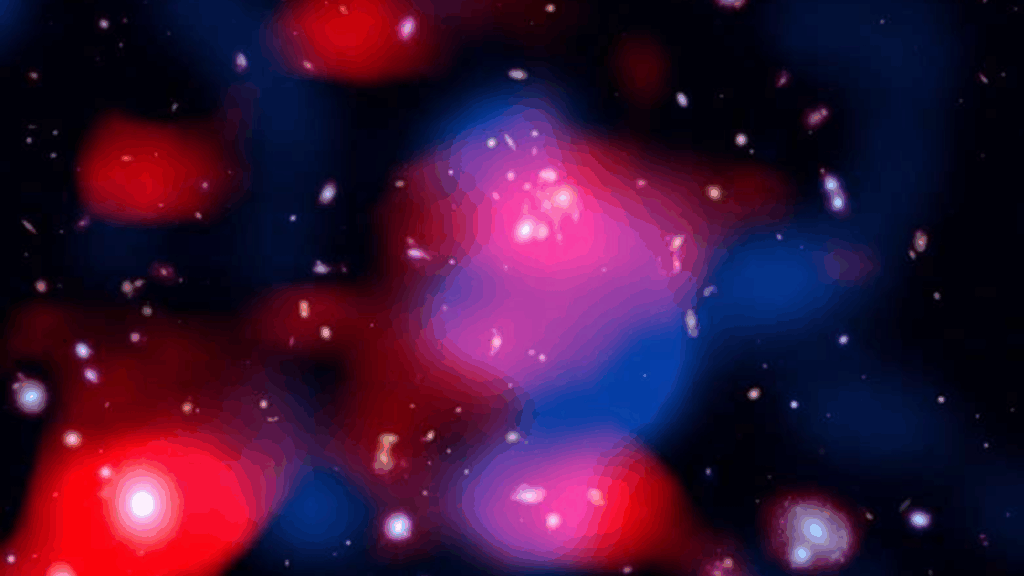Astronomers embarking on research into a remote galaxy cluster recently unearthed ancient radio signals that might illuminate the formation of the early universe. This finding emerged during an investigation into a colossal galaxy cluster identified as SpARCS1049, where the researchers detected ethereal and enigmatic radio waves. The details of this discovery were published in The Astrophysical Journal Letters, as well as being made available on the pre-print server Xrxiv. According to the study, these remarkable radio signals, which took an impressive 10 billion years to traverse the universe before reaching Earth, are traced back to a vast expanse of space teeming with high-energy particles and formidable magnetic fields.
The expansive regions characterized by these high-energy particles have garnered the title of “mini-halos.” Notably, this study indicated that no mini-halo had previously been detected this far into the cosmos. Defined as faint assemblages of charged particles, mini-halos are recognized for their ability to emit both radio and X-ray waves. Traditionally, these phenomena are found in clusters that exist in the intergalactic space between galaxies.
Roland Timmerman, an astronomer affiliated with the Institute for Computational Cosmology at Durham University and a co-author of the study, expressed his astonishment in a statement to Phys.org, remarking on the significance of the radio signal’s strength given its vast distance. Timmerman noted, “It’s astonishing to find such a strong radio signal at this distance. It means these energetic particles and the processes creating them have been shaping galaxy clusters for nearly the entire history of the universe.”
The astronomical team utilized data from the Low Frequency Array (LOFAR) radio telescope, a sophisticated instrument comprised of 100,000 small antennas spread across eight European nations. With rigorous analysis, the scientists contemplated two potential sources of the mini-halos’ formation.
The first proposed explanation revolves around the existence of supermassive black holes, which are typically situated at the core of galaxies. These black holes often release high-energy particles into the surrounding environment. However, the researchers expressed their intrigue and confusion over the mechanisms that would allow these high-energy particles to elude the gravitational grip of such powerful black holes, enabling them to coalesce into the observed clusters.
In addition to black holes, the second hypothesis put forth by the researchers implicates cosmic particle collisions. Such events are characterized by charged particles containing hot plasma colliding at incredibly high speeds, close to the speed of light. When these collisions occur, they generate a plethora of high-energy particles that can be detected from Earth, further expanding the understanding of our universe.
The findings ignited a belief among astronomers that either black holes or particle collisions have been energizing galaxies far earlier than previously hypothesized. Upcoming advancements in telescope technology, such as the development of the Square Kilometer Array, promise to enhance the capacity to identify even fainter cosmic signals, potentially unveiling further mysteries within the universe.
Julie Hlavacek-Larrondo, a co-lead author of the study from the University of Montreal, expressed her optimism regarding future discoveries in the domain of space exploration. In her statement, she emphasized that this research represents merely a preliminary exploration of the universe’s energetic past: “We are just scratching the surface of how energetic the early universe really was. This discovery gives us a new window into how galaxy clusters grow and evolve, driven by both black holes and high-energy particle physics.”
In summary, the unearthing of these ancient radio signals not only enriches the understanding of galaxy cluster formation but stands as a testament to the ever-evolving quest for knowledge concerning the universe’s early epochs. As researchers continue to unravel these cosmic mysteries, they reach deeper into the fabric of time and space, paving the way for new explorations and heightened understanding of our cosmic history.











